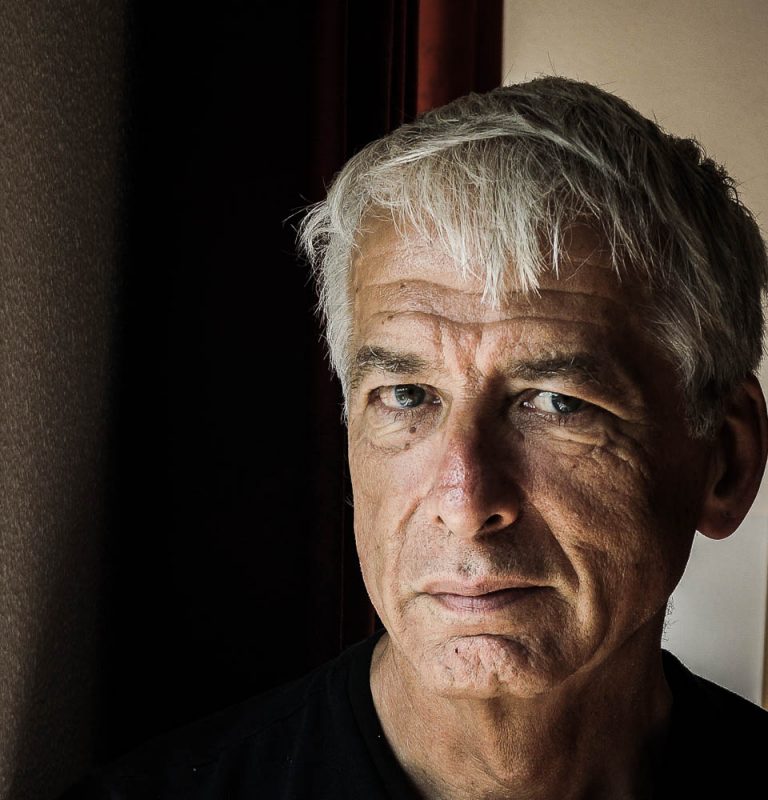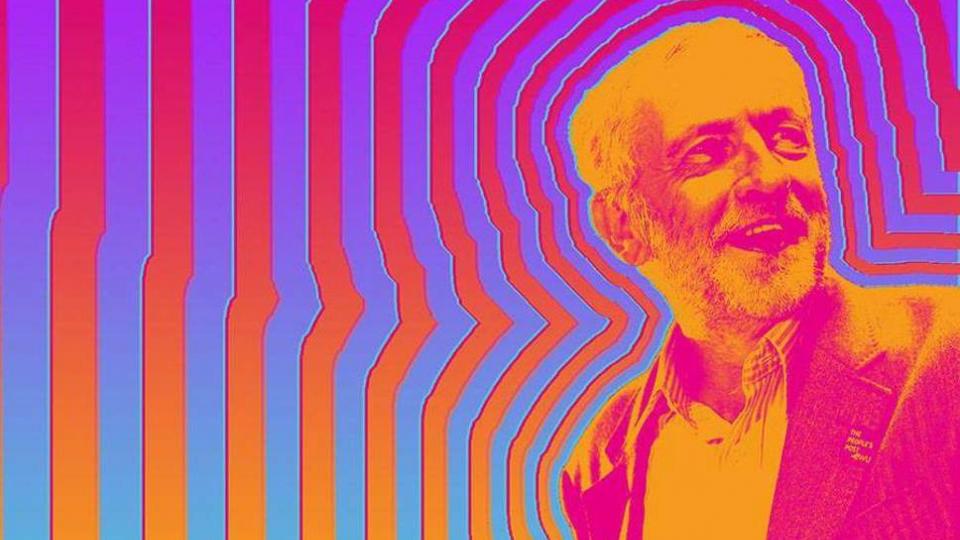

Not quite fully tucked behind the stage curtain, the missing-half-Deleuze is waving mischievously from the wings betraying the conceit of the trick’s own conclusions. Nonetheless, the other (missing) half is still plainly there. The crowd is thoroughly impressed but, then, rather than put Deleuze back together again, Hallward tries to convince everyone that the half-Deleuze in the whirling box is all there ever was. It’s a great trick, a real stunning display.

However, Hallward as magician has a unique variation on the routine: instead of sawing through the body at mid-torso, he cleaves it down the middle vertically, splitting left from right rather than top from bottom.

In this case, of course it is Gilles Deleuze up on the stage, inserted into the spindly wheeled compartmentalized box, his arms wriggling, feet flopping to and fro, his head sticking through the circular window (perhaps even sporting an impressive mustache that belongs to Nietzsche, disguised as Klossowski). You know the one: where the magician has the big saw and asks either an audience member or a beautiful assistant to lie down in a long horizontal box with feet, head, and hands poking out right where they are supposed to be. It is the image - a moving image - of an elaborate magic-trick gone terribly awry. Thus, in Hallward’s reading, Deleuze appears as a philosopher of ‘contemplative and immaterial abstraction’ (7) and as a proponent of an unanchored ‘absolute creation’-ism, where the world in all its ‘fleshy materialism’ and creatural life is progressively consumed by the subtractive vaporousness of the virtual – until finally Deleuze, as Crusoe, devours himself.īut there is one other lingering image conjured, somewhat more accidentally, by Out of This World. Deleuze’s philosophy is oriented by lines of flight that lead out of this world. As Hallward has it, ‘eleuze is most appropriately read as a spiritual, redemptive, or subtractive thinker, a thinker pre-occupied with the mechanics of dis-embodiment and de-materialisation. Hallward’s own punchline in regard to Deleuze might read, however, a great deal more like Hegel’s pronouncement on Spinoza’s death by consumption, namely that it was ‘in harmony with his system of philosophy, according to which all particularity and individuality pass away in the one substance’ (Hegel, 1968: 257). The punchline for Deleuze is that ‘any healthy reader dreams of seeing Friday eat Robinson’ (1953/2004: 12). Although it is not altogether clear whether Hallward entirely fancies himself as Friday to Deleuze’s Crusoe, there might be something mirrored in Deleuze’s claim, found in his early essay ‘Desert Islands,’ that ‘one could hardly imagine a more boring novel’ (1953/2004: 12) than Robinson Crusoe, and Hallward’s complaint in the opening pages of his own book about ‘the monotony of the underlying logic of Deleuze’s philosophy’ (2). Upon finishing Peter Hallward’s Out of this World: Deleuze and the Philosophy of Creation, one is left with the after-image of a Deleuze depopulated – unmoored from the actual, adrift in the pure virtual, an island, a deserted island, or at the very least a Robinson Crusoe (even if the differences, for Hallward, between Michel Tournier’s and Daniel Defoe’s Crusoe turn out to matter little in the end). Resist this tendency, at least from time to time, just long enough to come back to perceptions, to affects, which will redouble your concepts. The more gifted a philosopher is, I believe, the more he or she tends to leave the concrete behind, at least in the beginning. This is why we must avoid giving one term ascendancy over the others: every notion must drag in all the others, in its turn, and when the time is right …. Multiplicity, ritornello, sensation, etc., are all developed into pure concepts, but strictly speaking, they are inseparable from the passage from one concept to another. I only have one thing to tell you: stick to the concrete, and always return to it.


 0 kommentar(er)
0 kommentar(er)
